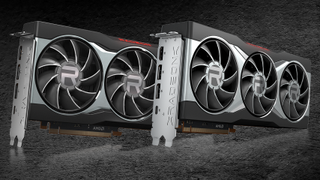Pakistan to Tax Graphics Cards Based on Onboard Memory
Pakistan simplifies collection of graphics cards import duty taxes .

GPU prices may be dropping, but graphics cards are still expensive, and some people have been trying to save money on import taxes by declaring lower values. This obviously doesn't sit well with governments — which is why Pakistan will now use onboard memory capacity to calculate import taxes on GPUs.
Starting in August, Pakistani customs will assess the value of graphics cards in accordance with their onboard memory capacity, no matter which graphics processors they use, and add a 36% import tax, reports INCPak (via VideoCardz). The government has issued a special Valuation Ruling that sets the value of a graphics board with 4GB of memory at $65, a card with 12GB at $328, and a card with 24GB of RAM at $540.
Import duties will now be calculated by converting a pre-set value into Pakistani Rupees and applying a 36% tax. The import duty on a GeForce RTX 3090 Ti 24GB graphics card, for example, will be $194.4 — arguably not much for one of the best graphics cards available today. Also, in a bid to better understand what people are buying, the authorities are demanding customs officers report the actual models being imported.
Pakistani Graphics Cards Valuation Ruling
| Memory Capacity | Assessed Value in USD |
| 4GB | $65 |
| 6GB | $98 |
| 8GB | $196 |
| 10GB | $262 |
| 12GB | $328 |
| 16GB | $468 |
| 24GB | $540 |
Considering that new graphics cards with 12GB of memory cost more than $328, and boards with 24GB of DRAM onboard cost more than $540, this Pakistani way of estimating their value is actually beneficial for the user. In fact, Pakistani gamers will probably enjoy relatively modest import duties on AMD's upcoming Radeon RX 7000-series boards and Nvidia's new GeForce RTX 40-series boards.
The problem with this type of value assessment arises when someone buys a graphics card (e.g. one that's older or used) at a discount. Older cards with high onboard memory capacities may end up being significantly more expensive than they are today.
One ironic thing about this new policy is that Nvidia's GeForce RTX 3060 Ti with 8GB of onboard memory has an MSRP that's $70 higher than that of Nvidia's GeForce RTX 3060 with 12GB of onboard memory. Apparently, some graphics cards will now cease to make sense in Pakistan thanks to import taxes.
Stay on the Cutting Edge
Join the experts who read Tom's Hardware for the inside track on enthusiast PC tech news — and have for over 25 years. We'll send breaking news and in-depth reviews of CPUs, GPUs, AI, maker hardware and more straight to your inbox.

Anton Shilov is a Freelance News Writer at Tom’s Hardware US. Over the past couple of decades, he has covered everything from CPUs and GPUs to supercomputers and from modern process technologies and latest fab tools to high-tech industry trends.
-
InvalidError Taxing used 5+ years old GPUs the same as current-gen stuff based on the amount of VRAM. Sounds extremely silly to me. At least the "valuations" are along well-used GPU pricing than new.Reply -
DRagor Reply
The less functioning the government is the more taxes it makes. It is only natural.peachpuff said:Pakistan has a functioning government?
Taxes are to bring money to government, not to look smart or silly.InvalidError said:Sounds extremely silly to me -
InvalidError Reply
Valuing an RTX3090Ti at $540 based on VRAM cheats the government out of half the taxes, which contradict your claimed objective of wanting to raise taxes. It likely has more to do with reducing customs' processing times and operating costs by giving people importing new stuff a ~50% off valuation for import tax purposes they cannot refuse.DRagor said:The less functioning the government is the more taxes it makes. It is only natural.
Taxes are to bring money to government, not to look smart or silly. -
JTWrenn A percentage based on market value at the time makes about a thousand times more sense but oh well.Reply -
pclaughton So close! Taxing based on TBP would've been a better idea, but that would be asking governments to understand technology, and I'm not holding my breath.Reply -
derekullo Would a Geforce 970 be considered a 3 or 4 gigabyte card ?Reply
Sorry couldn't help myself! -
InvalidError Reply
You run into the same issue of old GPUs with a bunch of stages (ex.: 295X2) getting taxed the same as new stuff based on a metric completely detached from the actual performance GPUs generally derive their performance from. Taxing based on phase count would also have the perverse incentive of loading the crap out of fewer phases to go down a tax bracket or two, which could be problematic for long-term reliability.Nikolay Mihaylov said:I think a better basis for taxation is the number of VRM stages.
From an environmental point of view, taxing based on board power would make sense to encourage buying components with lower power draw or at least better performance per watt. -
Soaptrail ReplyInvalidError said:Taxing used 5+ years old GPUs the same as current-gen stuff based on the amount of VRAM. Sounds extremely silly to me. At least the "valuations" are along well-used GPU pricing than new.
for cars the US taxes based on gas consumption. but not all cars use gas. They need to tax on mileage but good luck making that work.
Most Popular


